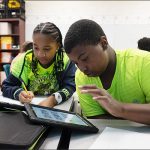
Introduction: The Need for Media Literacy in the Digital Age
In an era characterized by an unprecedented influx of information, media literacy skills have become indispensable tools for high school students. The ability to critically analyze, evaluate, and navigate media messages has never been more crucial. This article delves into the importance of promoting media literacy skills among high school students, exploring strategies, real-life examples, and the enduring impact of equipping the next generation with the tools to discern and engage with media responsibly.
Media Literacy in the Modern World: A Vital Skill Set
The words of media theorist Marshall McLuhan resonate profoundly in today’s context: “The medium is the message.” The digital landscape has transformed the way information is disseminated and consumed, making media literacy a foundational skill. High school students must learn not only how to access and interpret media but also how to critically analyze its influence, biases, and potential consequences.
Understanding Media Messages: Decoding Visual and Written Content
Analyzing Visual Media
Visual media, from images to videos, plays a significant role in shaping perceptions and opinions. High school students can benefit from learning how to deconstruct visual elements, such as composition, color, and symbolism, to uncover underlying messages. As American photographer Ansel Adams observed, “A photograph is usually looked at – seldom looked into.”
Deconstructing Written Content
In an era of digital content proliferation, critical reading skills are paramount. High school educators can guide students to analyze written media, identifying credible sources, evaluating arguments, and recognizing persuasive techniques. By delving beyond surface-level information, students can uncover deeper layers of meaning and develop a more nuanced understanding of the world around them.
Navigating Social Media: Building Digital Resilience
Recognizing Bias and Manipulation
High school students should be equipped to discern bias, misinformation, and manipulation on social media platforms. Engaging activities that highlight the spread of fake news, digital manipulation, and clickbait headlines empower students to approach online content with skepticism and a discerning eye. This aligns with the wisdom of American author Mark Twain: “A lie can travel halfway around the world while the truth is still putting on its shoes.”
Promoting Ethical Digital Citizenship
Promoting responsible digital citizenship is an integral component of media literacy. High school students should be encouraged to consider the ethical implications of their online actions, from sharing information to engaging in online debates. Educators can foster discussions about online etiquette, empathy, and the potential consequences of digital interactions.
Media Literacy and Civic Engagement: Empowering Informed Citizens
Analyzing Political Messages
Media literacy extends to understanding the role of media in shaping political narratives. High school students can analyze political advertisements, news coverage, and public discourse to uncover biases and assess the accuracy of information. This cultivates an informed citizenry capable of making educated decisions in a democratic society.
Advocacy and Activism
Empowered by media literacy skills, high school students can harness the power of media for advocacy and activism. They can create persuasive campaigns, produce documentaries, or engage in social media initiatives to raise awareness about important issues. As civil rights leader Malcolm X stated, “The media’s the most powerful entity on Earth. They have the power to make the innocent guilty and to make the guilty innocent, and that’s power.”
Collaborative Learning and Real-World Application: Bridging Theory and Practice
Project-Based Media Analysis
Engaging high school students in project-based media analysis deepens their understanding of media literacy concepts. Students can collaborate on projects that involve dissecting media messages, creating counter-narratives, or producing multimedia content that reflects their critical insights. This hands-on approach bridges theory and practice, empowering students to apply their media literacy skills in meaningful ways.
Guest Speakers and Workshops
Bringing media professionals, journalists, and experts to the classroom provides high school students with real-world perspectives on media literacy. Guest speakers can discuss topics such as media ethics, fact-checking, and the evolving media landscape. Workshops on digital storytelling, media production, and responsible social media usage further enrich students’ media literacy toolkit.
Conclusion: Equipping Future Leaders with Media Literacy
Promoting media literacy skills among high school students is not merely an academic endeavor; it is a call to empower the next generation with the ability to navigate the complexities of the digital age. By understanding media messages, navigating social media responsibly, engaging in civic discourse, and applying their skills to real-world contexts, high school students become informed, discerning, and empowered individuals. In the words of media scholar Noam Chomsky, “The more you can increase fear of drugs and crime, welfare mothers, immigrants and aliens, the more you control all the people.” Through media literacy education, we enable students to break free from manipulation and fear and instead become leaders who shape the media landscape, advocate for truth, and contribute to a more informed and just society.
















